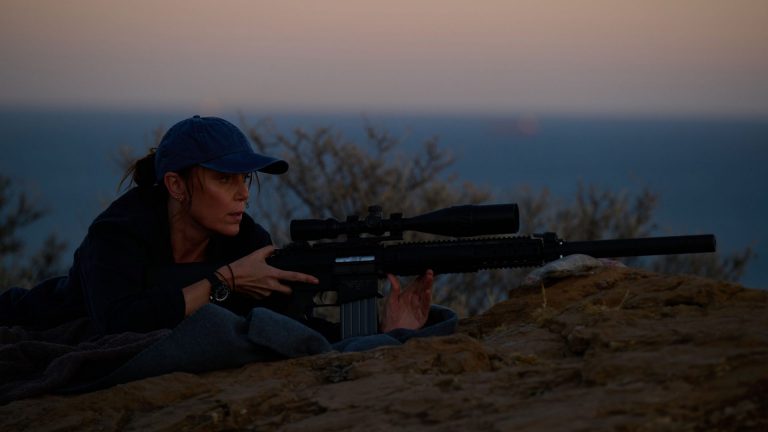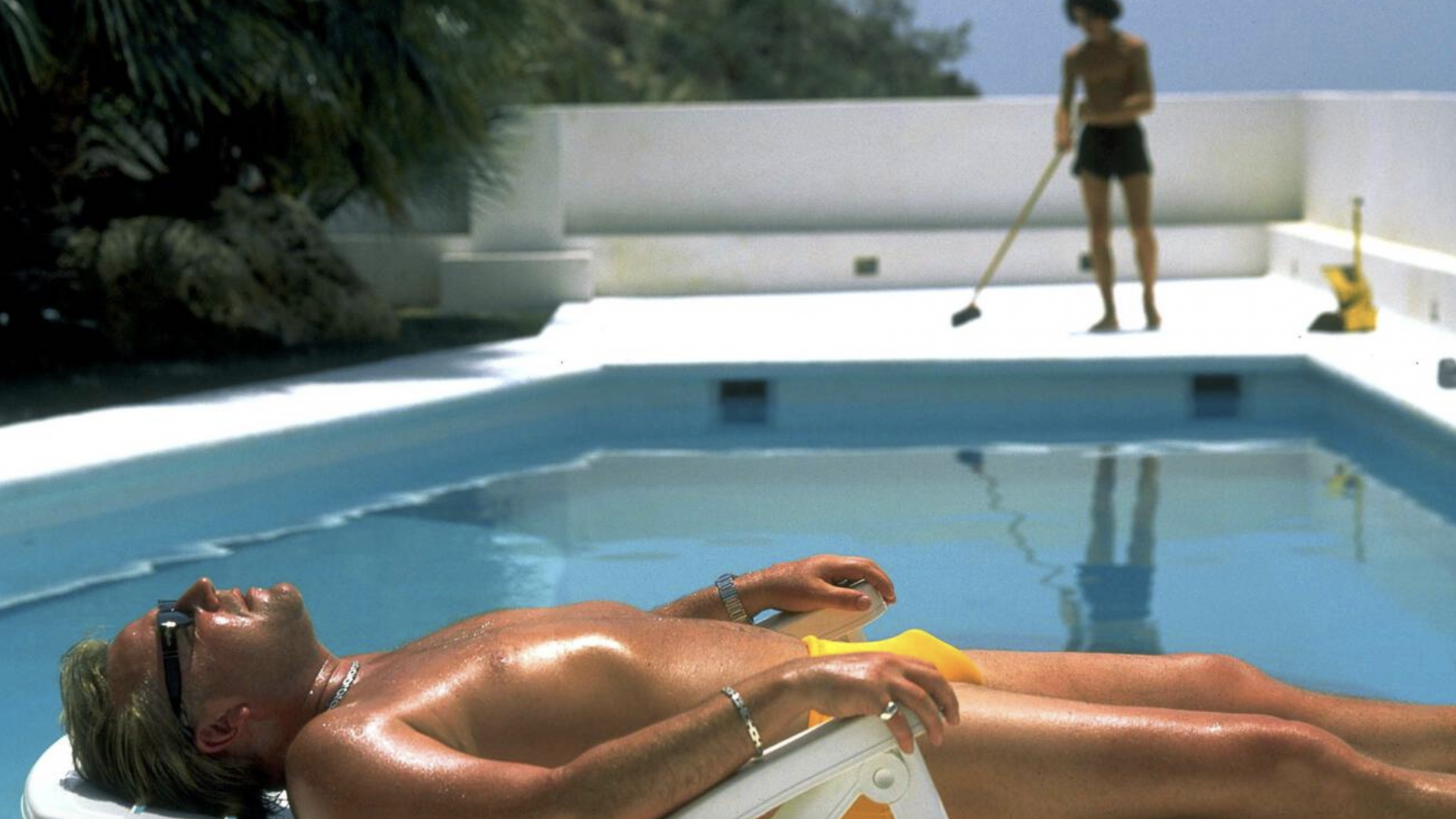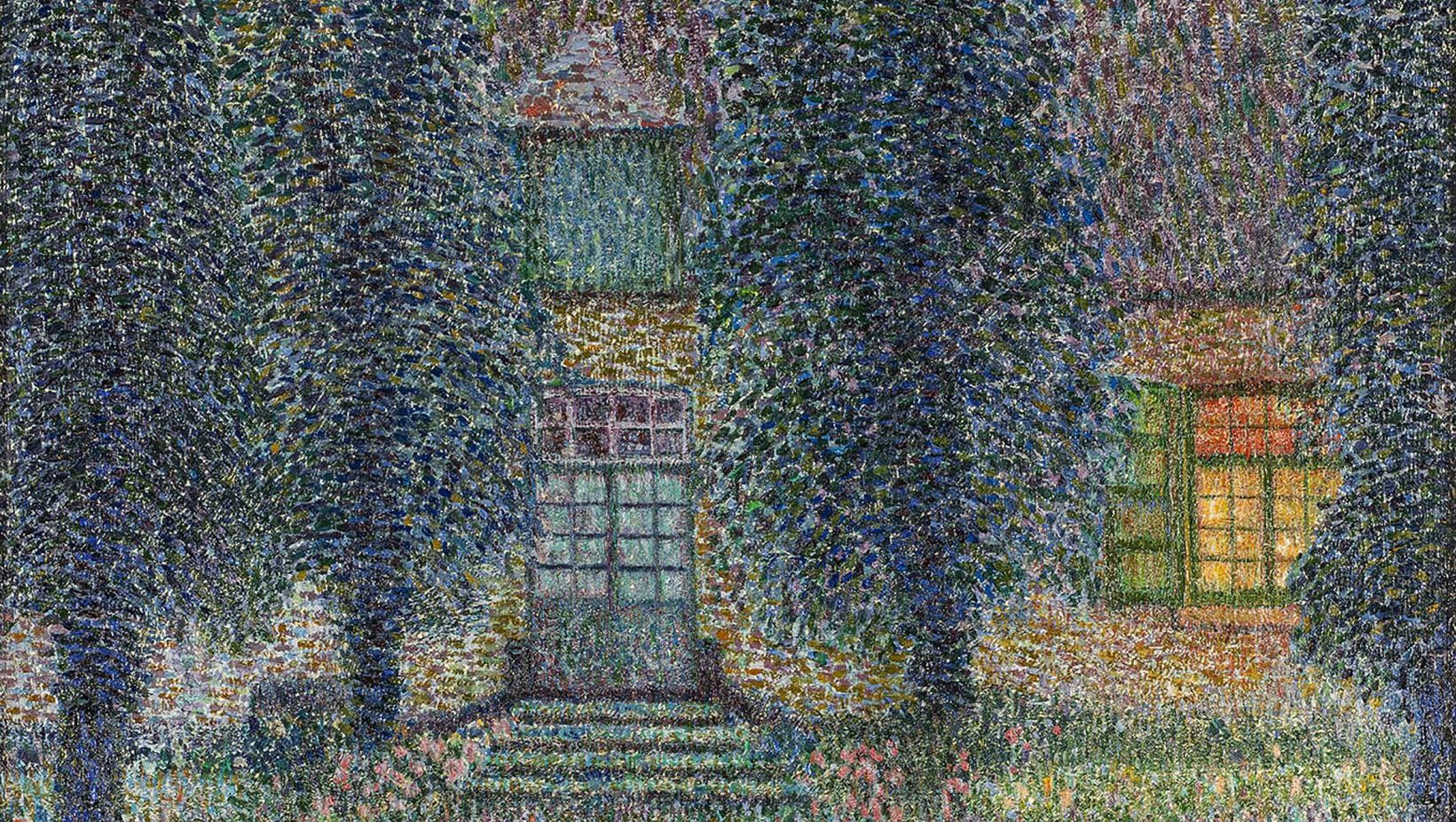When Sexy Beast first hit the screens a quarter of a century ago, there was nothing particularly auspicious about its arrival. Its key creative team – director Jonathan Glazer, writers Louis Mellis and David Scinto, and the cinematographer, Ivan Bird – were all on their feature movie debuts.
Jeremy Thomas, the producer, was an old hand, and the cast included some respected names, particularly Ray Winstone and Ben Kingsley. But this appeared to be one more movie in an absolute glut of British gangster films following on from the success of Guy Ritchie’s mockney caper Lock, Stock and Two Smoking Barrels.
The year of Sexy Beast saw the release of Ritchie’s follow-up, Snatch, starring Lahndan geezers Brad Pitt and Benicio del Toro, as well as Gangster No 1 with Paul Bettany and Malcolm McDowell.
And yet today it’s Sexy Beast with the devoted cult following. Lock Stock, Snatch, Gangster No 1, Layer Cake, The Business, Love, Honour and Obey and all the rest rarely crop up in conversation now, but clips of Bill Burr and Bill Hader talking about Sexy Beast get thousands of likes on YouTube.
And while Guy Ritchie has parlayed his early promise into a hit-and-miss career of anonymous Hollywood properties, Jonathan Glazer has made himself one of the most interesting and significant film-makers of the last 25 years. OK, he’s only made a quartet of films – as opposed to Ritchie’s 15, but those films include Birth, Under the Skin and The Zone of Interest: all of which I would argue could convincingly vie for the title of masterpiece.
So what makes Sexy Beast so special?
Well, first there’s that script. Mellis and Scinto were two actors who met at a party and started writing in order to give themselves something to perform. They came up with something they called Gangster No 1, and Glazer, who was already making his name as a director of award-winning adverts for the likes of Guinness (The Surfer) and music videos for Radiohead and Jamiroquai, got on board. But a dispute with the producers led to all three walking away and deciding to make another film together.
Another part of what was a projected trilogy and titled Gangster No 2 was repurposed and retitled Sexy Beast. This is where Thomas comes in. He read the script over a weekend and by Monday they were making the deal.
There are few scripts as entertaining as the films that end up being made from them. After all, the script is merely the recipe for the meal, the blueprint of the edifice. Bruce Robinson’s Withnail & I and Quentin Tarantino’s Pulp Fiction are famous exceptions that prove the rule, but Scinto and Mellis’s Sexy Beast can be added to the small pile.
To begin with, the script was followed to the letter. “If Don Logan says 12 yeses in the script, Ben Kingsley says 12 yeses in the film,” a collaborator of Glazer’s told me. And the stage directions and character descriptions are far more detailed than a script would normally be, referencing David Hockney for instance in describing the villa and pool where Gal (Ray Winstone) is enjoying his retirement on the Costa del Crime.
Suggested Reading


The Assassin: Why we love killers on screen
The second element is the casting by Lucy Boulting. Winstone comes to the film with a hardman image – from Scum to Nil by Mouth – but here he’s a softie who likes his calamari and beer, and loves his wife, Deedee (Amanda Redman), as well as a local lad who he treats like a son.
If he’s cast against type, that’s as nothing to the turn Ben Kingsley gives as foul-mouthed East End villain Don Logan. Kingsley hadn’t just played Gandhi in the 80s, he WAS Gandhi. His role in Steven Spielberg’s Schindler’s List perpetuated his image as the moral core of any film, softly spoken and wholeheartedly good.
Don Logan kicked that image in the balls, and in the process set off a trend for respected thespians heading to the other side of the tracks to eff and jeff with the best of them. See Ralph Fiennes in In Bruges and Hugh Grant in Ritchie’s The Gentlemen for similar (but not as good) performances.
The heritage of the British gangster film was also nodded and winked at with substantial parts for James Fox, who’d played a hoodlum opposite Mick Jagger in Performance, and Ian McShane, who was Richard Burton’s dogsbody in the underrated Villain. Of course, when Sexy Beast was released, McShane was more familiar to audiences as the lovable crime-solving antique dealer Lovejoy; so it came as a bit of a shock to see him sodomised in a shower in Sexy Beast.
Then there’s Jonathan Glazer’s direction. Every shot is framed with near perfection. The colour palette is extraordinary – from those Hockney blues to Winstone’s sunburn. You can feel the sizzling heat of the film’s opening – “baking, sweltering, like a sauna” – as well as being immersed in the murkiness of the London underworld – a literal immersion as the setpiece robbery takes place both underwater and underground.
There’s very little flash to him, or showiness of the first-time director. Glazer allows his characters to flourish and express themselves and there’s nothing false in the film. Not a line, not a gesture.
Whether it’s ordering a meal – “I’ll have the calamari” – or killing someone with sudden violence, it feels true. Even Don Logan, a theatrical monstrosity, is bizarrely, frighteningly credible.
Finally, what lifts Sexy Beast above its contemporaries and the many gangster films that have come out since is that despite its fairly tropey plot – the one last job, the heist, the visiting psycho – the film is really a deep exploration of masculinity and happiness.
Gal is a man deeply, astonishingly in love, in a mature relationship. He is a man happy with what he has. Satisfied. Rather than a gangster film, the film is best viewed as a darkly hilarious retelling of the Book of Job.
In interviews, Ben Kingsley described the plot of the film as: “Once upon a time, there was a man who thought he was very happy, so the Gods sent to him the unhappiest man in the world.” To which I can only add: “Yes, yes, yes, yes, yes, yes, yes, yes, yes, yes, yes, yes!”
John Bleasdale is a writer, film journalist and novelist based in Italy




